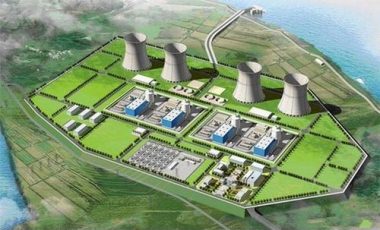Preparations for six AP1000s
11 November 2009
Chinese planners are moving ahead with three new nuclear power plants based on AP1000 reactors - the first to be developed after technology transfer from Westinghouse.
The US-based reactor vendor is already constructing pairs of AP1000 reactors in China with its partner Shaw at Sanmen and Haiyang, but these new units are to be the first built independently after the technology transfer that was part of Westinghouse's contract. They are also China's first nuclear power plants not located on the coast.
 |
| The future of Pengze |
The sites are Xian'ning, Hubei province, Tauhuajing in Hunan, and Pengze in Jiangxi. All have been given the go-ahead for final design and initial construction work, such as site clearance, for the first two reactors at each site. Main construction is set to start on all three sites around this time next year, with commercial operation following around 2015.
A further wave of AP1000 build will include at least one other pair of units at each of the above sites, while up to six new locations are already pencilled in for AP1000 development.
Each of the latest sites is to be led by a different Chinese firm: Xian'ning by China Guangdong Nuclear Company; Taohuajing by China National Nuclear Company; and Pengze by China Power Investment Corporation. Transferral of the AP1000 technology is being carried out by State Nuclear Power Technology Corporation, which will now take the engineering lead on new AP1000s.
Nuclear production line
Having developed its own reactors and imported a wide range of units from international vendors, China is now focused on two designs for mass deployment: the CPR-1000, developed from French 900 MWe-class units imported in the late 1980s, and the AP1000.
According to plans, fleets of these reactors will be constructed with exponential speed for China to achieve a nuclear capacity of over 60 GWe by 2020 - and as much as 120-160 GWe by 2030. Such an achievement would make China by far the biggest generator of nuclear power in the world.
Successive CPR-1000 projects have featured increasing amounts of local engineering and now around 90% of plant components are sourced from Chinese firms. The AP1000 features modular construction and China has quickly set up specialised nuclear facilities to produce the very large modules - effectively creating a production line for nuclear power plants.